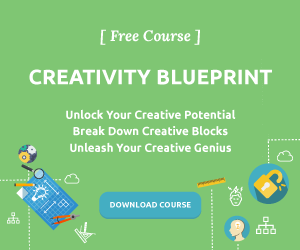How I Plan My Year - Part 2
In the previous episode I helped you identify your mission, values, vision and strategy. It’s all very well having a big vision and goals for your life but unless you can execute them effectively they will remain as dreams only. And when you combine great strategic thinking with excellent execution it will put you in the top 1% of your field.
Hi, I’m James Taylor, business creativity keynote speaker and in today’s episode we get more tactical and I describe how to plan out your year in 90 day cycles and how my team and I use two week sprints to achieve more in less time.
In this episode, you'll learn:
- Lean Startup Methodology
- Agile Project Management
- 90-Day Cycles
- Two Week Sprints
- Strategic Initiatives
- Tactical Work
Enjoy this episode?
If you enjoyed the show, please rate it on iTunes or Stitcher and write a brief review. That would really help get the word out and raise the visibility of the Creative Life show.
Transcript
In the previous episode I helped you identify your mission, values, vision and strategy. It’s all very well having a big vision and goals for your life but unless you can execute them effectively they will remain as dreams only. And when you combine great strategic thinking with excellent execution it will put you in the top 1% of your field.
Hi, I’m James Taylor, business creativity keynote speaker and in today’s episode we get more tactical and I describe how to plan out your year in 90 day cycles and how my team and I use two week sprints to achieve more in less time.
When I was in my thirties I worked in technology, advising Silicon Valley CEO’s and entrepreneurs. Perhaps the two most useful concepts I learned in Silicon Valley was the Lean Startup approach and Agile project management. Let me explain how these slightly geeky concepts help you to live a more creative life and achieve your goals?
The Lean Startup methodology is used by many billion dollar companies including Dropbox and Zappos. It revolves around the Build–Measure–Learn loop. First you generate ideas to build a minimum viable version of your product/service/artwork, then you measure its effectiveness by gathering data, then you learn from that information before building the next (and hopefully better) version.
For example whenever we launch a new online summit we go through a similar process. In month one we generate ideas for possible new Summits , choose our best idea, and then build it conducting video interviews and creating all the various web pages for it. Then in month two we launch a minimum viable version of the Summit in order to get feedback from our target audience. This provides us with data, both quantitative (#’s of registrations) and qualitative (customer reviews) which we learn from and then either create an evergreen version of the Summit or work on a version 2.0 of it.
The reason I love the Lean Startup methodology is that it fits perfectly into 90 day cycles. Let’s imagine one of your strategic initiatives for the next 90 days is to launch a podcast to build your brand and generate leads for your business. In month one you might research the market, decide on the format for your podcast and create your first five episodes. Then in month two you’d publish those episodes, share it with people, and measure the response to it. In the third month you reflect on this data, learn what went well and what needs to be improved, decide if podcasting is for you, and if you feel it still fits with your strategy and will help achieve your objectives then you iterate and the process begins again.
The other concept my team and I use when it comes to planning and executing on our ideas is ‘Agile’ project management. Each strategic initiative we have is broken down into two week sprints, which are like mini-projects. So with the podcast example the first two week sprint might consist of researching similar podcasts and their formats, what is the minimum technology/software required for podcasting, and creating a one-page document that outlines the show, who it is for, how often it will be produced, etc.
The benefit of working in two week sprints is that it provides a great deal of focus for the tactical work while at the same time having a strong link to the higher strategic goals and objectives. If strategy is at the 20,000ft level, then 90 day cycles operate at 10,000ft and sprints are on the runway.
Everyday myself and my small team have a short 15 minute meeting where each member of the team gives an update on their progress on the sprint including saying what they did yesterday, what they are working on today, and what is holding them back.
I also make sure that I schedule in time on my calendar to work on the various activities that have been tasked to me in the next two week sprint. I’ve found that if it isn’t on my calendar it’s just not got going to get done.
So that’s an overview of how I plan my year. It starts with mission, vision, values and strategy, then progresses to strategic initiatives and measuring those, and finally that informs my 90 day cycles, two week sprints and daily actions.
The value I find in doing this planning is not so much in final plan itself (as parts of that change over time). No, instead what is powerful about this process is that it makes you reflect deeply on why you what you do, what you want to do with your life, and how you are going to achieve it.
I’d love if you’d leave a comment on how you plan your year.



